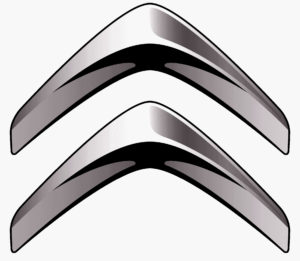The high tech family car – 1970 to 1984
Launched at the 1970 Paris motor show, the GS redefined the mid sized saloon category. Updated with more power and a hatch in 1980 and labelled the GSA
From the moment of its launch at the 1970 Paris motor show, the GS redefined the mid sized saloon category.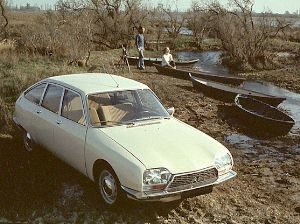
Completely new from bumper to bumper, it was a technological tour de force, with hydropneumatic suspension, all-round disk brakes and class leading aerodynamics. It had an all new air cooled engine with a flat four layout to ensure perfect balance and minimal vibration. Tardis-like, the GS can accommodate five adults and their luggage with ease.
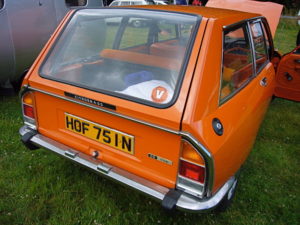
Small wonder it won the Car Of The Year award in 1971. Further innovations followed quickly; the C-matic semi-automatic transmission appeared in 1971 and the Wankel rotary engined Birotor in 1973.
For more information about the Birotor click here.
The public loved it, and so did the dealers. The GS filled the gap between the Ami, with its grown-up 2CV underpinnings & the majestic DS, giving Citroën a car to meet the needs of almost every buyer.
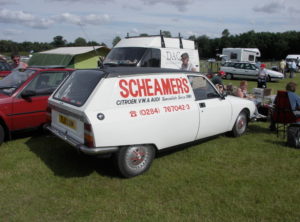 At its peak, the GS was easily the best selling car in France, flying out of the factory at the rate of 20,000 a month. Indeed, the G series remains the second most popular Citroën ever, with total sales of two and a half million.
At its peak, the GS was easily the best selling car in France, flying out of the factory at the rate of 20,000 a month. Indeed, the G series remains the second most popular Citroën ever, with total sales of two and a half million.
The G series again demonstrated that Citroën allowed radical design to reach production. In common with the DS/SM (and very few other cars), the GS features true centre-point steering, which ensures safe handling in the event of sudden tyre deflation. Inboard front brakes minimise unsprung weight to give a superlative blend of comfort and handling. The unique headlamps also broke new ground in providing excellent night time visibility, which comfortably exceeds that of much later cars.
 At the start of the 1972 model-year, the saloon was joined by an estate; perhaps the perfect mid-range load carrier, as its hydraulic suspension maintains a constant ride height, regardless of load. Three door van variants were also produced, though few survive today.
At the start of the 1972 model-year, the saloon was joined by an estate; perhaps the perfect mid-range load carrier, as its hydraulic suspension maintains a constant ride height, regardless of load. Three door van variants were also produced, though few survive today.
The range continued to evolve, with larger engines and changes to trim. The Pallas model brought thicker carpets and more upmarket fabrics. Attempts were also made to cater for younger drivers with the GSX 1, 2 & 3. These had sportier seats, spoilers and also experimented with matt black in lieu of bright trim.


The GS received a tail and facelift in 1977 with redesigned grille and rear light clusters.
By far the biggest change came in 1979, with the launch of the GSA and the conversion of the saloon into a hatchback. 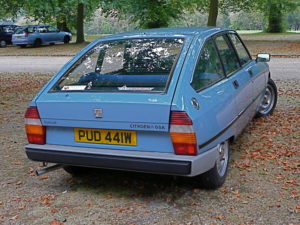 Out went stainless steel bumpers & door handles and in came plastic, doubtless shaving a few francs from the cost of building each car. Whether this improved the aesthetics is a moot point. The new ‘satellite’ dashboard was, however, a revelation, with all the controls grouped so that they can be operated with the fingertips, while keeping both hands on the wheel. A five speed gearbox was introduced at the same time, standard on the upmarket cars, optional further down the range.
Out went stainless steel bumpers & door handles and in came plastic, doubtless shaving a few francs from the cost of building each car. Whether this improved the aesthetics is a moot point. The new ‘satellite’ dashboard was, however, a revelation, with all the controls grouped so that they can be operated with the fingertips, while keeping both hands on the wheel. A five speed gearbox was introduced at the same time, standard on the upmarket cars, optional further down the range.
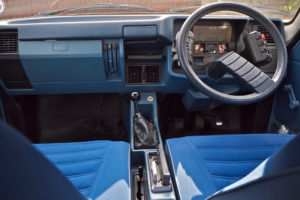 Although a commercial success with over 575,000 examples constructed, the GSA never quite achieved the rate of sales seen for the GS. Certainly, when the BX appeared in 1984, the end was in sight.
Although a commercial success with over 575,000 examples constructed, the GSA never quite achieved the rate of sales seen for the GS. Certainly, when the BX appeared in 1984, the end was in sight.
Today, the G Series has found its niche in the classic car world. Those who seek an entry-level hydraulic Citroën have moved onto more recent models, leaving enthusiastic G owners to preserve, improve and enjoy these landmark vehicles. 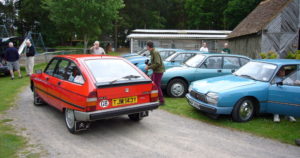 And just in time too; there are barely two hundred GS & GSAs left on Britain’s roads; the vast majority have simply rusted away. There may already be more decent SMs in the UK than good GSs. Don’t wait any longer!!
And just in time too; there are barely two hundred GS & GSAs left on Britain’s roads; the vast majority have simply rusted away. There may already be more decent SMs in the UK than good GSs. Don’t wait any longer!!
Click here for a personal overview of the G series cars prepared by Graham Wilson, the Club’s G Registrar.


